19 November, 2024
The Strategic Sherpas guide to the Art of Client Servicing
In the world of business, trust is a vital currency that can enhance your reputation and deepen relationships. It’s a resource that accumulates over time, significantly benefiting your agency, team, clients, and ultimately, your bottom line.
Words and actions can build bridges or burn them, inspire trust or erode it. This comprehensive guide delves into the art and science of effective communication, with a particular focus on building strong client relationships.
We’ll explore how language can be harnessed to enhance your reputation, deepen connections, and ultimately drive business growth. From understanding the psychology behind trust to mastering the art of the first impression, this guide offers practical strategies to help you build lasting relationships with your clients.
Let’s discover how to transform your communication into a powerful tool for success.
How to build trust
1. Relationships are personal and they start from the first communication
In the early days your focus should be around building trust. Trust underpins our willingness to exchange hard-earned money for products and services, and commit to lifelong partnerships. Frances Frei, Harvard Business School professor suggests that there are three pillars. Authenticity, Logic and Empathy.
- Your client wants to know that they are speaking to the real you because if they don’t, they’ll sniff you out. This is about being your authentic self.
- Logic is about whether you are able to deliver what you say you can. Do you have the skills?
- And finally, empathy – do you care about me and my success? You’ll need to demonstrate this.
Frances has a really insightful TED talk which you can watch here https://youtu.be/pVeq-0dIqpk?si=WZ7GBLtz2BOyMGtP
2. The Power of Language
As part of my entrepreneurial journey my business partner hammered home to me that I was never to use the word cost. Clients buying our services are making an investment. And that’s stuck with me.
Behavioural scientists tell us that if we want to change our behaviour, we need to change our language. Advertising Agencies and professional services businesses have many ‘bad words’ that I’d like you to stop saying to enhance your reputation.
Here is a summary table from Tim Williams, author, speaker and presenter. He has given some clear advice on how to move from ‘Cost Based Language’ to ‘Customer Value Language’.
This communicates what you are trying to sell. Your client should see you as an investment, not a cost.
| Cost Based Language | Customer Value Language |
|---|---|
| Cost | Price |
| Estimates | Talent |
| Hours | Results |
| Rates | Solutions |
| Billable Time | Outcomes |
| Time of Staff | Metrics of success |
This video is from 2016 but what Tim Williams talks about is still relevant today – https://youtu.be/MjybE59uTWM?si=Pt6JAp66-iEcGQS9
3. Understand how people make decisions.
“Human Beings Decide Emotionally and Justify Rationally.”
If you can’t feel emotions, then you can’t make decisions. The front part of your brain is the ventromedial prefrontal cortex, when this is active, you can let go of conditioned fears. As a result, you can then make decisions.
People will buy when they feel confident about their decision. This is subjective as it is a ‘feeling of confidence’. So if you want people to take action, you’ll need to make them feel confident.
What you need to do
1. Ensure you set the correct tone from day one. The Primacy Effect (a cognitive bias) means you need to ensure that the initial contact leaves a lasting impression. That first initial email, that first meeting, the pitch. All of these early events matter significantly because of an individual’s tendency to remember the first piece of information they encounter.
How did you and your team show up?
2. Practice active listening; When you and the agency get that opportunity to speak face to face with your potential client getting too wrapped up in ‘what you can offer’ may come at the expense of listening to the commercial objectives of your prospect. They will leave clues as they talk and missing them could be the difference between missing the boat or onboarding them.
What did you hear that your colleague didn’t?
3. Master the art of communication (in almost all forms). It is a multifaceted role for those on the front line of client servicing. Being comfortable and great at communicating clear project plans via email, handling difficult phone calls and presenting in front of senior leaders are just a part of your role.
Where are you strong? Where are you weak? How can you overcome these challenges?
Mastering the art of client servicing is more than just delivering a great product or service; it’s about building enduring relationships founded on trust and mutual respect.
By understanding the psychology behind human behaviour and the power of language, you can elevate your client interactions to new heights.
From the initial touchpoint to long-term partnerships, every interaction presents an opportunity to strengthen your bond with clients. By focusing on active listening, tailoring your communication, and demonstrating empathy, you can foster an environment of trust and collaboration.
Mastering the art of client servicing is more than just a professional necessity; It’s a strategic advantage that can set your agency apart in a competitive landscape.
Remember, your clients are not just customers but partners in your business journey. By investing in their success, you are investing in your own.
So, are you ready to transform your client relationships? Start by implementing the strategies outlined in this guide, and watch as your business thrives.






